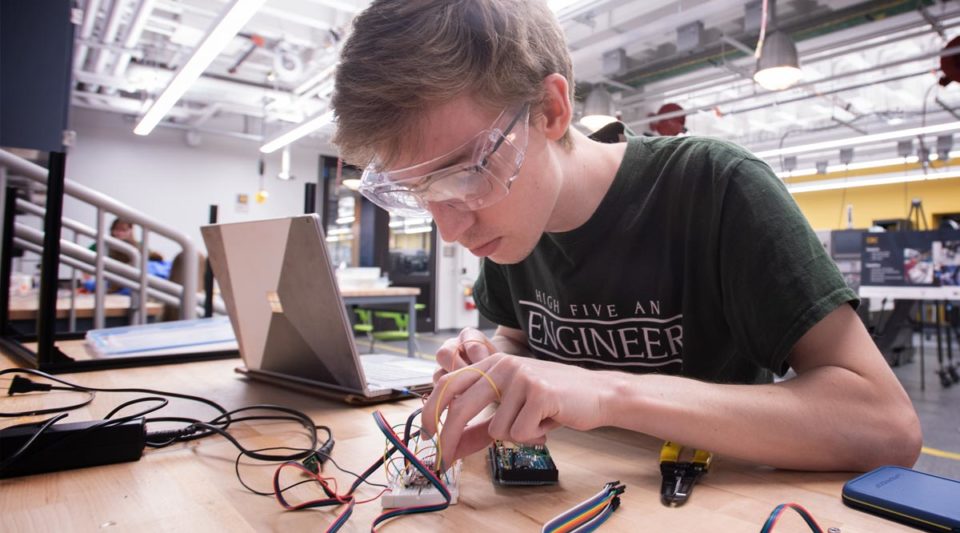Students are transforming their computer-generated designs into reality thanks to the technology and staff in Notre Dame’s new Engineering Innovation Hub (EIH), located on the first floor of Cushing-Fitzpatrick Hall of Engineering. The EIH offers leading-edge resources for fabrication, automation, robotics, and modeling.
In the first year of the EIH’s operation, undergraduate classes in mechanical, aerospace, electrical, chemical/ biomolecular and civil engineering, along with 10 student clubs, have used EIH resources to create parts for satellites, off-road vehicles, rockets, bridges, prosthetic devices, and more.
Graduate students also make use of the EIH. Jeff Kantor, professor of chemical and biomolecular engineering, said the facility is especially useful for his graduate class, Laboratory Instrumentation and Control.
In the EIH, “Students learn principles of digital and analog instrumentation, how to prototype parts using stereolithography, computer vision, and apply these to their research,” he said.
As part of an engineering education, “The importance of designing, fabricating and building cannot be overstated,” said Michael Stanisic, associate professor of mechanical engineering and faculty advisor for Notre Dame Baja SAE, a club that builds a small, off-road, one-passenger vehicle to race in a global competition.






“The type of vehicle that is competitive for Baja SAE has no commercial equivalent. Parts from go-karts are too small and lightweight and will not withstand the terrain, while parts from sport utility vehicles are massive and result in heavy vehicles that are slow and not competitive.
“Without the EIH, Baja simply couldn’t fabricate the more unique parts.”
“We rely heavily on the EIH for our manufacturing,” said Jacob Shapiro, senior and project manager for the Notre Dame Rocketry Team. “We’ve used almost every machine to fabricate our systems this year.”
Enable ND, which uses bio-design to create low-cost, prosthetic technologies, uses EIH expertise to improve their devices. “The EIH allowed us to experiment with different types of 3D material, so we could determine the optimal material to use for the prostheses we’re creating,” said sophomore Julianna Whitecotton.
EIH Fabrication Manager and machinist Joe Perri teaches students how to use EIH resources effectively. “Joe showed us what order of operations to use to machine the parts, how much extra material we would need for fixturing purposes, and what tolerances to use for press fits,” said Baja president and junior Kevin Gabriel.
“He helped our entire team become better at designing for manufacturing, which I think is a crucial skill all engineers should have.”
According to Perri, working with student projects has its own rewards: “The best thing is seeing how proud the students are of the things they’ve built.”
— Karla Cruise, Notre Dame Engineering
